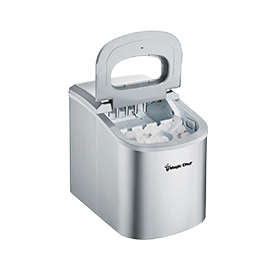HPMC Manufacturing Plant A Story of Innovation and Sustainability
Hydroxypropyl Methylcellulose (HPMC) is a vital cellulose ether widely used across various industries, including pharmaceuticals, food, cosmetics, and construction. The innovative manufacturing of HPMC has become a focal point for companies aiming for sustainability and efficiency. In this article, we explore the significance of HPMC manufacturing plants, the processes involved, and the implications for the future.
The Importance of HPMC
HPMC is valued for its versatility and functionality. In the pharmaceutical industry, it acts as a binder, thickener, and stabilizer. In food products, it contributes to texture and moisture retention, making it a popular ingredient in various formulations. The construction sector utilizes HPMC as a key component in tile adhesives and dry-mix mortars, enhancing workability and prolonging open times. The growing demand for these applications drives the need for efficient and sustainable HPMC manufacturing.
Key Manufacturing Processes
The production of HPMC is a complex process that starts with the raw material—cellulose. This natural polymer undergoes several chemical modifications to obtain the desired properties. The key steps in the manufacturing process include
1. Cellulose Sourcing The process begins with the selection of high-quality cellulose sources, typically derived from wood pulp or cotton linters.
2. Alkalization The cellulose is treated with an alkali solution, which facilitates the substitution of hydroxyl groups in the cellulose molecules. This step is crucial for modifying the cellulose structure and preparing it for etherification.
3. Etherification In this stage, the alkali-treated cellulose is reacted with propylene oxide and methyl chloride. The etherification process introduces hydroxypropyl and methyl groups into the cellulose backbone, resulting in HPMC.
4. Precipitation and Purification The resulting HPMC undergoes purification to remove any unreacted raw materials and by-products. This is typically accomplished through a precipitation process, followed by filtration and washing.
hpmc manufacturing plant

5. Drying and Milling Finally, the purified HPMC is dried and milled to achieve the desired particle size and consistency, ready for packaging and distribution.
Innovations in HPMC Manufacturing
The HPMC manufacturing sector is experiencing significant innovations aimed at improving efficiency and reducing environmental impact. New technologies, such as continuous processing and advanced reaction monitoring, enhance product quality and yield while minimizing waste. Additionally, some manufacturers are exploring the use of bio-based raw materials, which contribute to a circular economy model.
Sustainability is a key focus. Many HPMC plants are adopting eco-friendly practices, including water recycling systems, energy-efficient machinery, and reducing greenhouse gas emissions. By implementing these measures, manufacturers not only comply with rigorous environmental regulations but also align with global sustainability goals.
The Future of HPMC Manufacturing
Looking ahead, the HPMC manufacturing industry is poised for growth. The increasing application range in emerging sectors—such as pharmaceuticals, where the demand for controlled-release drug formulations rises—presents significant opportunities. Furthermore, advancements in biotechnology could pave the way for more sustainable production methods, transitioning from traditional petrochemical sources to renewable feedstocks.
Collaboration between manufacturers, academia, and regulatory bodies will be crucial in driving research and development efforts. By fostering innovation, the industry can overcome challenges related to production costs, environmental concerns, and market competitiveness.
Conclusion
HPMC manufacturing plants serve as essential hubs for producing a versatile and widely used compound. With a shift towards sustainability and innovation, these facilities are not merely production sites but critical players in the global move towards environmentally responsible manufacturing. As demand continues to grow across various sectors, the focus will remain on improving processes, ensuring quality, and minimizing the industry’s ecological footprint. The future of HPMC manufacturing is bright, marked by the dual goals of meeting market needs and protecting our planet.
-
The Application and Significance of Construction RdpNewsMay.19,2025
-
Industrial Grade HpmcNewsMay.19,2025
-
Building Coating Adhesive Building Coating Adhesive HpmcNewsMay.19,2025
-
Application Of Hpmc For Detergent For Detergent In DetergentsNewsMay.19,2025
-
Application Of Hpmc Cellulose In Cement-Based MaterialsNewsMay.19,2025
-
Application Of High Quality Hpmc For Construction In The Field Of ConstructionNewsMay.19,2025




